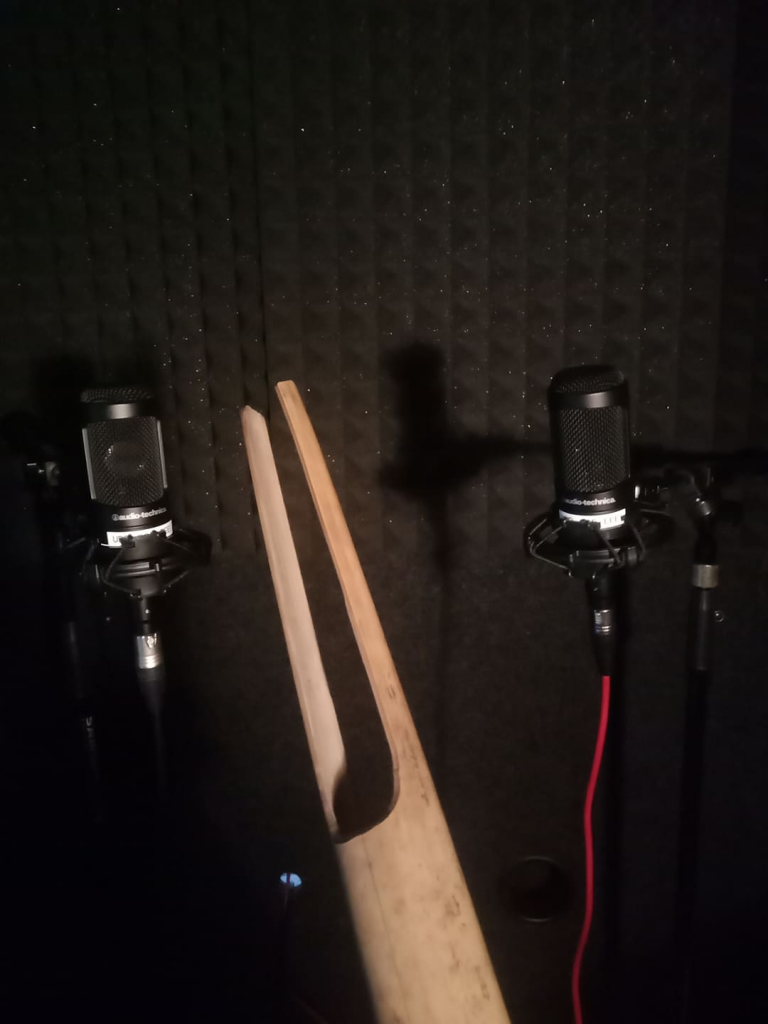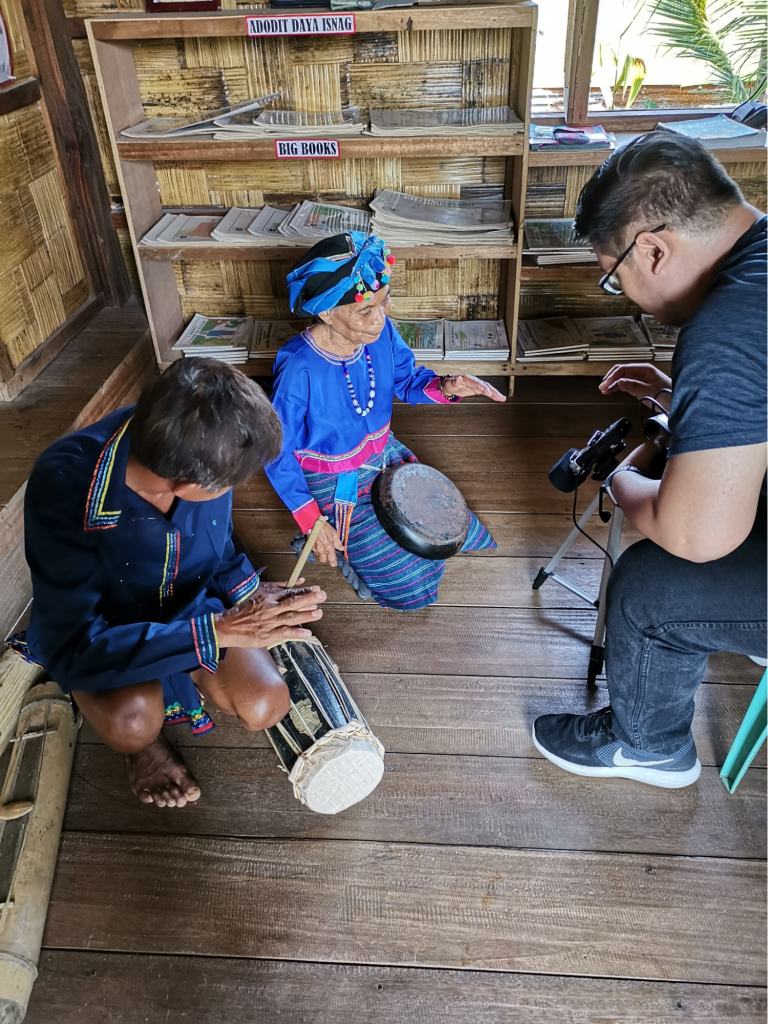Featured image above: Panay Bukidnon readying their instruments for recording at the Roxas City Convention Center, Capiz
“Development of a Philippine Indigenous Instruments Sound Database”, also known as “Kalipunan ng mga Katutubong Tunog,” and later named simply “Katunog”, is an open-source database of Philippine indigenous instrument sounds. The project started in the latter half of 2018 and ran for two years until the first half of 2020. The Department of Science and Technology – Advanced Science and Technology Institute (DOST-ASTI) funded and spearheaded the project which was supervised by Elmer Peramo, former Department Director, and Project Leader Dr. Franz de Leon, of the University of the Philippines Electrical and Electronics Engineering Institute (UP-EEEI) and currently director of DOST-ASTI . Katunog was set to be the first project of its kind in the country.
In September 2018, Dr. de Leon met with Dr. Verne de la Peña, Director of the UP Center for Ethnomusicology (UPCE), to establish a partnership for the project. Soon after, Benedic Velasco and Grace Buenaventura from the UPCE joined the Katunog team as Project Staff tasked to organize the logistics and recording process of instruments from the UPCE Instrumentarium. The said instruments were then recorded in various locations, including the Museum of Instruments, with the assistance of the UP College of Music Department of Musicology, the UPCE Library and the EEEI anechoic chamber. Recording in the anechoic chamber was the optimal procedure as it cancels and prevents echoes from being reproduced as the instruments are played, but since some instruments would not fit the chamber, other venues were identified.

Enlisted for the job of playing the instruments were Elizabeth Arce, Michael Joey Undag and Sir Virgil Jimenez, all of whom are members of the university performing group Tugtugang Musika Asyatika (UP TUGMA). Ephraim Lizardo, Francis Santelices, Vanessa Tan, Albert Bugayong and Gil Angeles from UP-EEEI comprised the recording and engineering team while graduate assistants Christine Magpile, Susan Depierda, and Andrew Ocampo were responsible for metadata capture as well as field research, respectively. During this first year of the project, recordings transpired mostly in the UPCE Instrumentarium and several locations in Northern Luzon.
For the second year of the project, the team began to widen their scope of field recordings by getting in touch with universities, indigenous groups and organizations in the Visayas and Mindanao regions. With such an expanded task, a bigger team was necessary. Sol Maris Trinidad from the UPCE and Prof. Ernesto “Bajo” Zaldua Jr. of MSU-IIT were added to the roster as consultants for their knowledge and familiarity with the regions concerned. Busy for most of the year of 2019 and the earlier parts of 2020, the Katunog team was able to visit numerous locations in Visayas and Mindanao with some notable venues being the Mindanao State University – Iligan Institute of Technology (MSU-IIT), Ang Panublion Museum in Roxas City, Capiz, and in Pandan, Antique, and have met with numerous indigenous people there. With the growing amount of data to be processed, the project enlisted the aid of graduate assistant Patricia Alpay. The team conducted fieldwork as often as three times a month.
Also a part of the project’s Year 2 implementation (September 2019-September 2020) is the construction of an anechoic chamber in the UP College of Music, which was originally conceptualized as the place where the rest of the recordings will be conducted. As of this writing, the building of the anechoic chamber has not started due to quarantine restrictions.
Today, Katunog boasts 104 unique entries of instruments, a number of them having multiple sample sets, and, to date, a few thousand instances of downloads. In addition to the extensive collections of the UP Center for Ethnomusicology, a database of sounds of the instruments of the Philippines is more than welcome. This project is the fruit of the labors of people across the country, different in languages, and walks of life but united by their fervor to preserve, develop and impart the culture of the Philippines. Katunog, we hope, will be one of the many cultural and technological efforts to come.
In recent news, the Cultural Center of the Philippines is hosting an ongoing songwriting competition. CCP’s Kanto Kultura, promotes the use of indigenous music materials in composition. Songwriters are encouraged to use the sound samples available in the Katunog online collection.
The project was completed on September 30, 2020 and the management of the Katunog website was officially turned-over to the UP Center for Ethnomusicology on March 24, 2021. The website is hosted and maintained by DOST-ASTI in their facility. To explore the project more, visit the official site at https://katunog.asti.dost.gov.ph/


